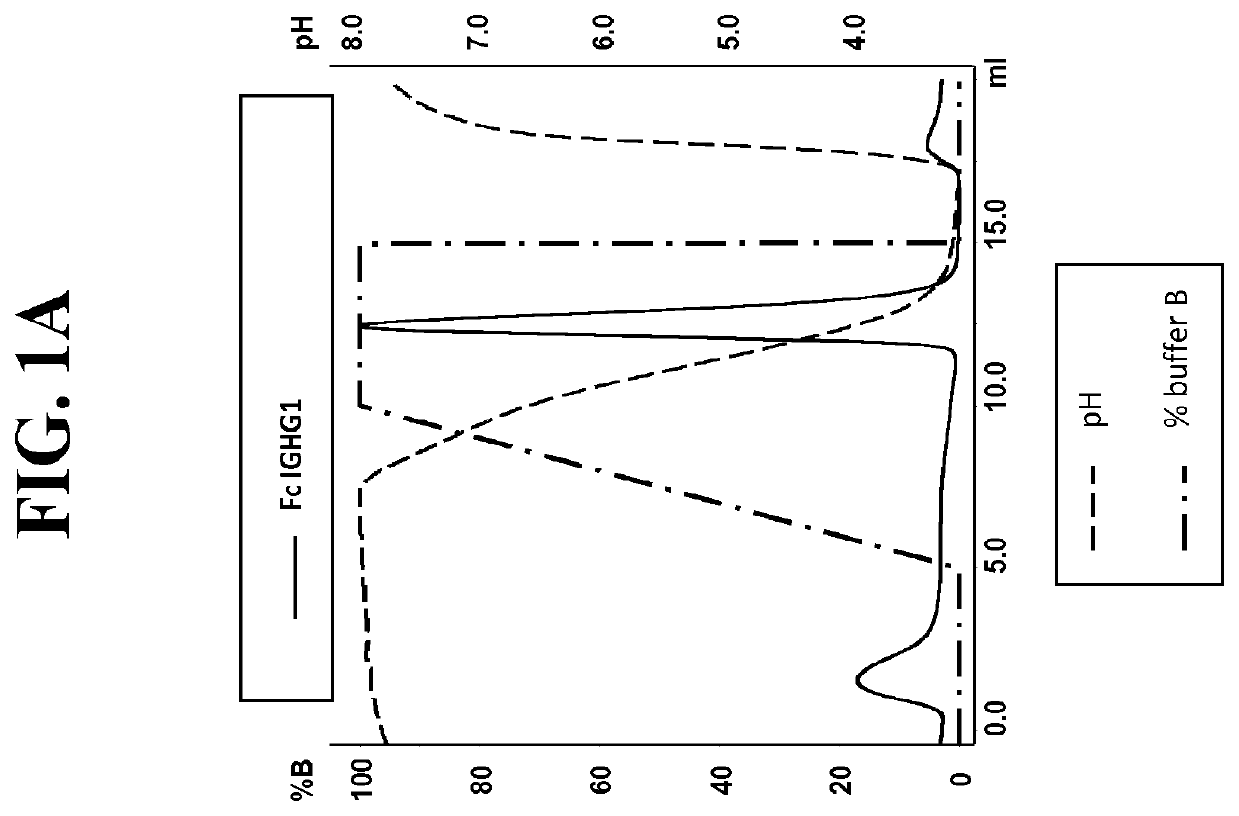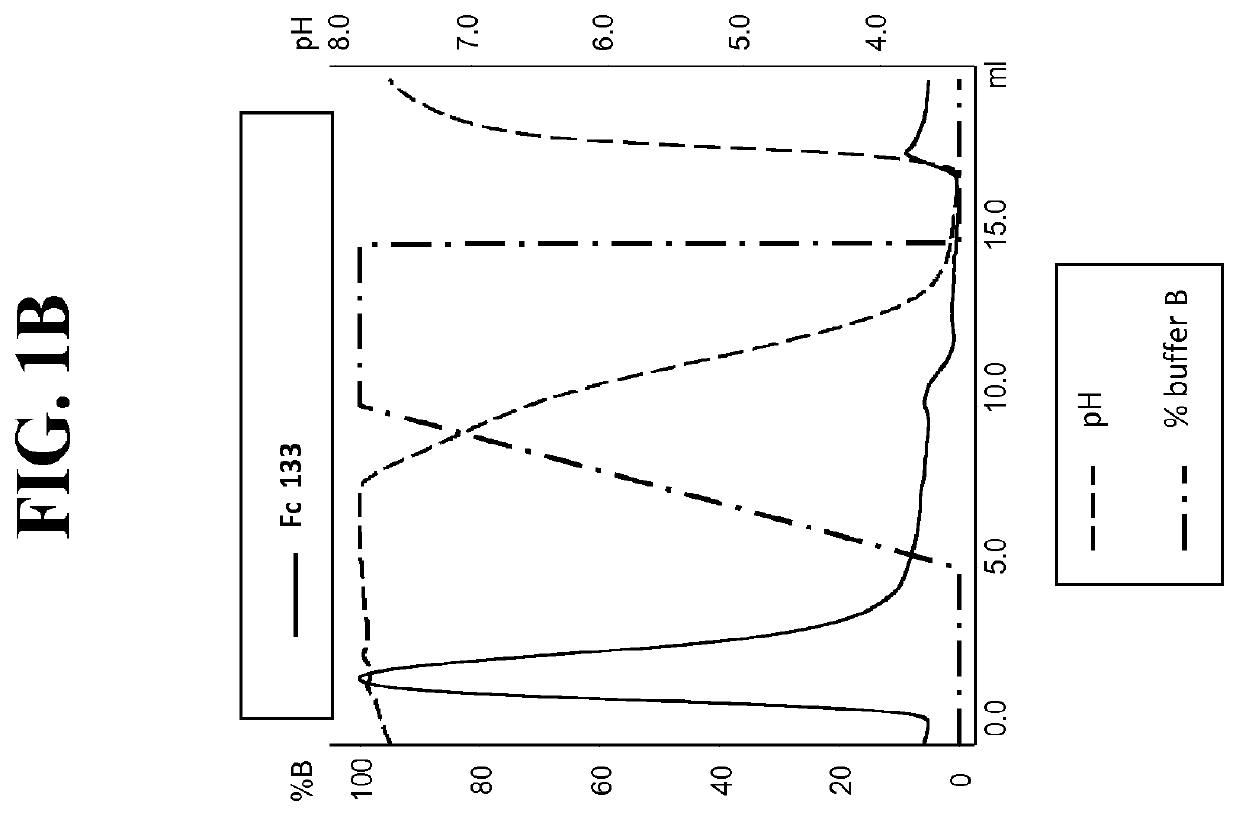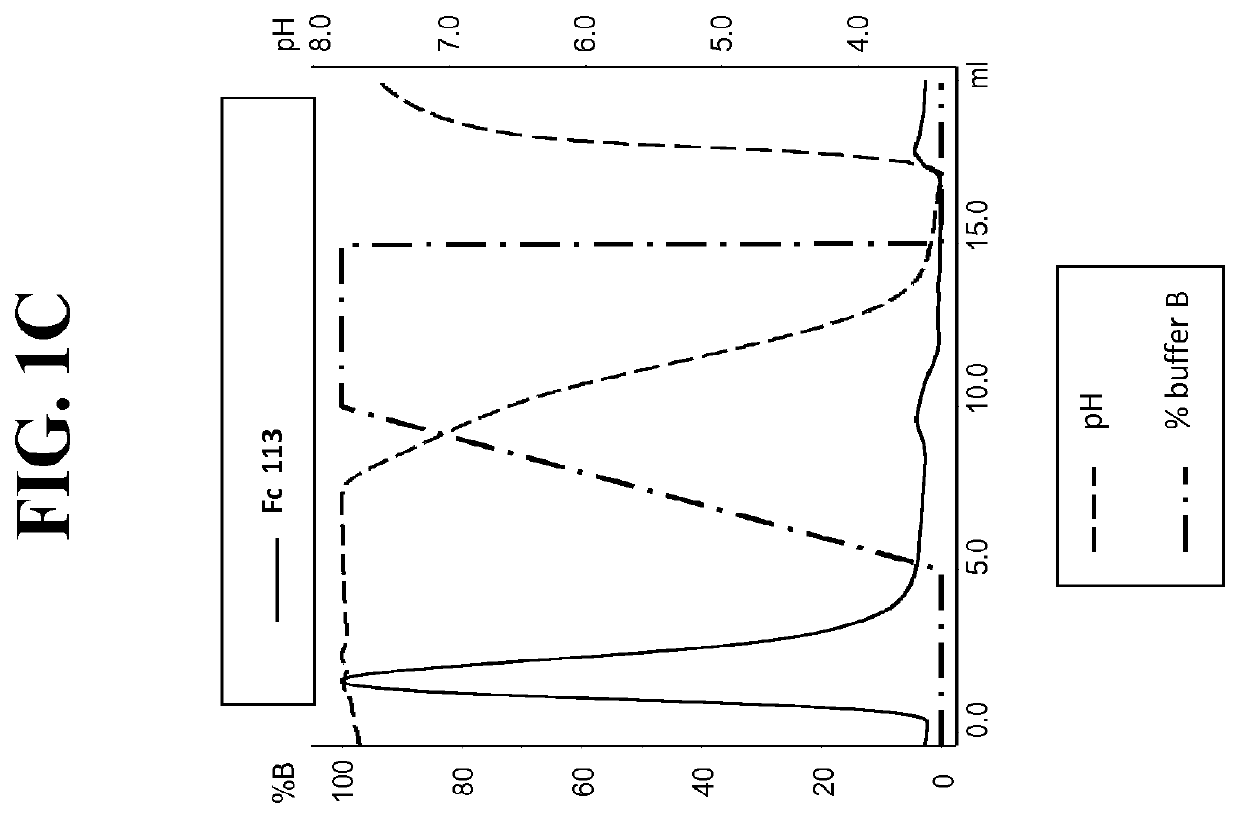Purification of hetero-dimeric immunoglobulins
a hetero-dimeric and immunoglobulin technology, applied in immunoglobulins, peptides, separation processes, etc., can solve the problems of limiting the scope of this technology, creating additional protein a binding site that will interfere with the purification, and limited the straightforward method, so as to reduce or eliminate the binding of the hetero-dimeric
- Summary
- Abstract
- Description
- Claims
- Application Information
AI Technical Summary
Benefits of technology
Problems solved by technology
Method used
Image
Examples
example 2.1
c Immunoglobulins Abrogated for Protein A Binding
[0241]Purification and Testing of FAB Fragments Abrogated for Protein a Binding.
[0242]Post production, cell culture supernatants were conditioned with 0.1V of 1M Tris-HCl pH8.0. Protein L resin (Genescript, Piscataway, USA) was added to the conditioned supernatant and incubated overnight at 4° C. After incubation, bound proteins were washed with ten CVs of PBS pH7.4, eluted with 4CVs of 0.1M Glycine pH3.0, and finally neutralised with 0.1V of 1M Tris-HCl pH8.0. To assess Protein A binding, Protein L purified FAB were injected on a 1 ml HiTrap MabSclect™ column (GE Healthcare Europe GmbH, Glattbrugg, Switzerland) at pH8.0 (Citric acid / Na2HPO4 buffer). Elution was performed with a pH linear gradient combining various amounts of two buffers (running buffer (A): 0.2 M phosphate citrate buffer pH8.0 and elution buffer (B): 0.04 M phosphate citrate buffer pH3.0). The linear gradient went from 0% B to 100% B in 5CVs. Eluted fractions were ne...
example 2.2
c Immunoglobulins Abrogated for Protein G Binding Chromatography
[0247]Gradient mode chromatography and capture-elution mode chromatography were performed according to the procedure described for Example 1.
[0248]SPR Testing of FAB Fragments Abrogated for Protein G Binding
[0249]cDNA encoding the human HER3 extracellular region (UniProt accession number: P21860 (ERBB3 HUMAN) residues 20-632, SEQ ID NO: 73, referred herein as HER3 antigen; UniProt Consortium (2013) Nucleic Acids Res., 41(Database issue):D43-7; http: / / www.uniprot.org / ) fused to the amino acid sequence SAHHHHHHHH (SEQ ID NO: 100) was cloned into an expression vector similar to the heavy and light chain expression vectors described above and transiently transfected in HEK293E cells using PEI. Post production, cell-free supernatants were prepared, filtered sterilized, conditioned with 0.1 volume of 1 M Tris-HCl pH 8 and purified by Ni2+-NTA affinity chromatography (GE Healthcare Europe GmbH, Cat. No: 17-5318-02).
[0250]For S...
examples 3.1 and 3.2
n of Hetero-Dimeric Immunoglobulins Using Protein A or G
[0251]Post production, cell culture supernatants were adjusted to pH6.0 with 0.1V of 0.2M NaH2PO4 and loaded on 1 ml HiTrap™ MabSelect SuRe™ column (Example 3.1) or on a 1 ml HiTrap™ Protein G HP column (Example 3.2) at 1 ml / min. After loading, bound proteins were washed extensively with 0.125M phosphate citrate buffer pH6.0. Elution was performed using two isocratic gradients combining two buffers (running buffer (A): 0.125M phosphate citrate buffer pH6.0 and elution buffer (B): 0.04M phosphate citrate buffer pH3.0). The hetero-dimeric immunoglobulin was eluted with the first isocratic gradient for 70CVs which varied as follows: 55% B in example 3.1, 90% B and 80% B in the first and second instances shown in Example 3.2. The non-abrogated homo-dimeric molecule was eluted in the second isocratic gradient at 100% B for 20CVs in all examples. Eluted fractions were neutralised with 0.1V of 1M Tris-HCl pH8.0. Supernatant, flow thro...
PUM
| Property | Measurement | Unit |
|---|---|---|
| pH | aaaaa | aaaaa |
| pH | aaaaa | aaaaa |
| flow rate | aaaaa | aaaaa |
Abstract
Description
Claims
Application Information
 Login to View More
Login to View More - R&D
- Intellectual Property
- Life Sciences
- Materials
- Tech Scout
- Unparalleled Data Quality
- Higher Quality Content
- 60% Fewer Hallucinations
Browse by: Latest US Patents, China's latest patents, Technical Efficacy Thesaurus, Application Domain, Technology Topic, Popular Technical Reports.
© 2025 PatSnap. All rights reserved.Legal|Privacy policy|Modern Slavery Act Transparency Statement|Sitemap|About US| Contact US: help@patsnap.com



